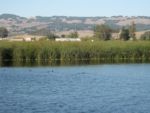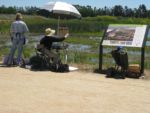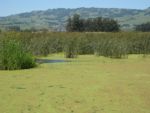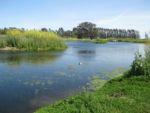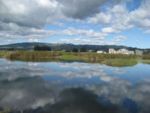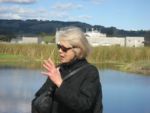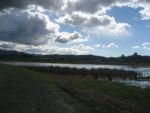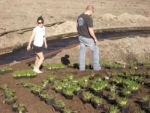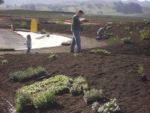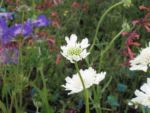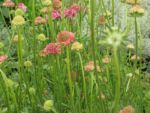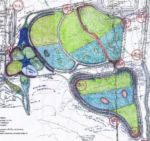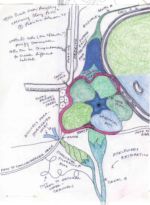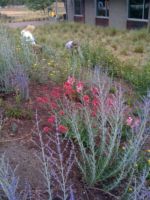Ellis Creek Water Recycling Facility
Challenge
At this extraordinary facility located along a scenic agricultural corridor adjacent to the Petaluma River, our client’s vision was to use the access roads to treatment ponds to create more than three miles of public trails and interpretive sites to educate visitors about the intricacies of wastewater treatment and habitat interdependence. Working with renowned environmental artist Patricia Johanson, ZAC’s challenge was to create an inviting design for this extensive site that would complement the surrounding agricultural fields and hills of southern Sonoma County and attract visitors as well as wildlife.
Solution
- Utilize Sonoma County’s typical layout of a historic farmstead to organize the treatment buildings and ponds
- Plant a hedge row of columnar trees as a windbreak for the work yard, to complement windbreaks in adjacent farms and ranches
- Plant Victorian palm trees to frame the main building, as they were commonly used at farmhouses or important civic buildings
- Include a flower garden, also a part of a traditional farmhouse , as a demonstration water wise landscape
- Maximize the use of native plant habitats, that will integrate the site with the environs
- Patricia Johanson’s conceptual idea to use the Salt Marsh Harvest Mouse, an endangered species, as a unifying image for the waste water pond shape
Special Features
- Per Patricia’s concept, the demonstration garden’s planter beds and the water reservoir are laid out in the shape of a giant Morning Glory flower, which played an important part in the lives of Native Americans in this region
- Flower garden is a demonstration of drought-tolerant plants and water-wise irrigation


